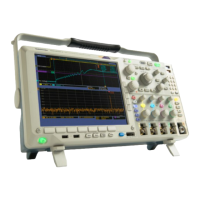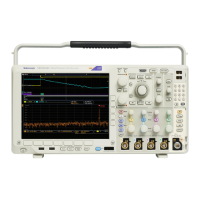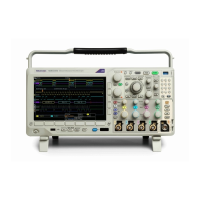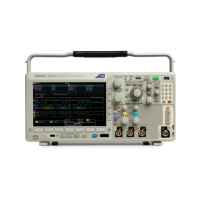Performance Verification
s. In the test reco
rd, enter the greatest result determined within this frequency
range (100 MHz to 2.9 GHz).
t. For MDO4104-6
and MDO4054-6 Only. Change the fre quency range
as follows:
Change the s
top frequency to 6.1 GHz.
Change the start frequency to 99 MHz.
Set the generator to provide a 100 MHz, –15 dBm signal.
Step the generator, in 100 MHz intervals, through frequencies from
100 MHz to 5.7 GHz. At each interval, determine the test result as
follows:
Note the reading on the power meter and the readout for the
Reference marker on the oscilloscope.
Calculate the difference between the two readings. This is the
test result.
In the test record, enter the greatest result determined within this
frequency range (100 MHz to 5.7 GHz).
Check
Third Order
Intermodulation Distortion
This check verifies that the oscilloscope meets the specificationforThirdOrder
Intermodulation Distortion.
WARNING. The generators are capable of providing dangerous voltages. Be sure
to se
t the generators to off or 0 volts before connecting, disconnecting, and/or
moving the test hookup during the performance of this procedure.
Re
quired equipment. You will need the following equipment for this check. All
items are shown in the required equipment list. (See Table 15.)
Tw
o generators. Each generator must be capable of providing signals up
to 6 GH z. You can use two of the same model generator, or two different
generators, depending on what you have available. Example generators are
the Anritsu and the Rohde & Schwarz SMT06.
A power combiner (hybrid coupler), such as the K rytar 3005070.
Three SMA cables. Use cables that will connect to your generators’ outputs.
100 MDO4000 Series Specifications and Performance Verification

